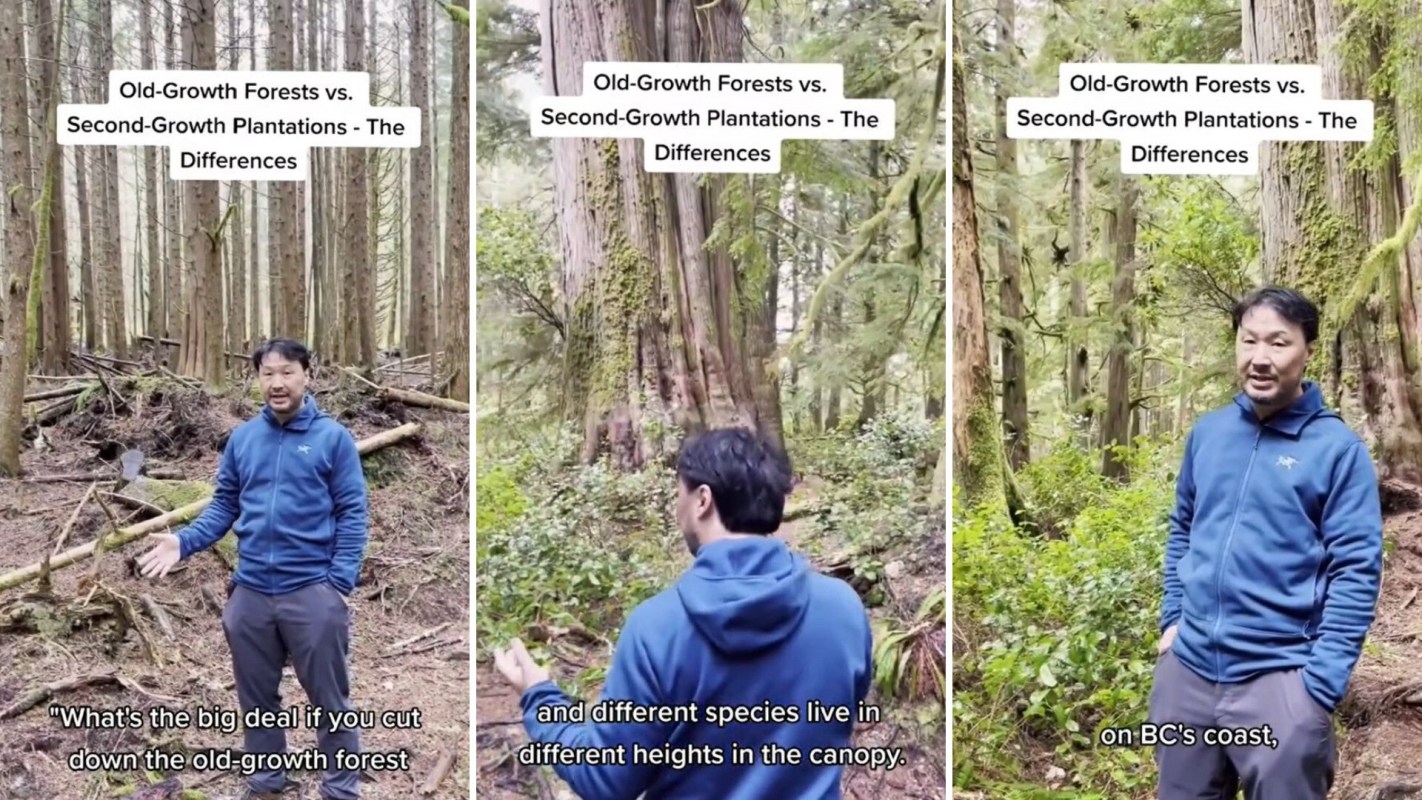In much of the world, old-growth forests have been cleared away for lumber and replaced with second-growth plantations of trees.
While replanting does restore or even increase the number of trees in an area, many other forest features are lost whenever humans destroy old-growth forests.
A TikTok by the Endangered Ecosystems Alliance (@endangeredecosystems) breaks down the differences between old-growth and second-growth forests in British Columbia and worldwide.
@endangeredecosystems See a summary of the structural differences between coastal old-growth temperate forests and the ensuing second-growth tree plantations that they are being replaced with - which are re-logged every 50 to 60 years in BC, never to become old-growth again. Old-growth forests are vital to support unique endangered species, the climate, tourism, clean water, wild salmon, and First Nations cultures whose unceded territories these are. Please Send a Message to help protect BC old-growth forests at the link in our profile. #oldgrowthforest #bigtree #endangeredecosystemsalliance ♬ original sound - Endangered Ecosystems Alliance
What are old-growth forests and second-growth plantations?
An old-growth forest is an ecosystem "distinguished by old trees and related structural attributes," according to the USDA's Forest Service. It is a forest that has grown over a long period without significant damage or interference from humans. It includes trees, plants, and wildlife adapted to that ecosystem.
A second-growth plantation is similar to an old-growth forest in that it has many trees in one place. However, the similarities don't go much further.
As the Endangered Ecosystems Alliance video explains, second-growth plantations may be planted by humans and often harvested again within a few decades, which changes many critical features of the ecosystem.
What are the main differences?
The Endangered Ecosystems Alliance identifies four main differences between old-growth forests and second-growth plantations in the video.
First, second-growth plantations have closed canopies. "The trees grow together, blocking out the sunlight," explains the Endangered Ecosystems Alliance. Old-growth forests have gaps in the canopy where trees have fallen.
Second, because little sunlight reaches the ground in a second-growth plantation, there are few small plants between the larger trees, according to the Endangered Ecosystems Alliance. In an old-growth forest, many gaps between the trees allow for lush undergrowth that provides food and shelter for wildlife.
Third, in an old-growth forest, the Endangered Ecosystems Alliance points out that there are trees of many different ages. Young saplings are mixed with mature trees and ancient giants.
Since each is a different height, the tree canopy forms multiple layers. "Different species live in different heights in the canopy," the Endangered Ecosystems Alliance explains. In a second-growth plantation, the trees are all planted simultaneously, so they're at similar heights and stages of growth.
Fourth, the Endangered Ecosystems Alliance says that old-growth forests have many more dead trees and branches. Some dead wood is on the ground, and some stay upright, caught on other trees in what is called a "snag."
According to the Endangered Ecosystems Alliance, these snags become "wildlife trees." "There's a lot of wildlife habitat in the dead wood," adds the video presenter. By contrast, second-growth plantations have far less of this dead wood.
Why do these differences matter?
While replanting after removing old-growth forests can replace the trees, it doesn't replace the other wildlife or recreate the environment that has been destroyed. "Old-growth logging is not a sustainable activity," the Endangered Ecosystems Alliance asserts in the video.
The impact of that loss is felt in many areas, both in the economy and the environment. According to the description for the Endangered Ecosystems Alliance video, "Old-growth forests are vital to support unique endangered species, the climate, tourism, clean water, wild salmon, and First Nations cultures whose unceded territories these are."
So by protecting these old-growth forests, we are also helping the environment sequester more carbon pollution and support more life, alongside various other benefits.
Join our free newsletter for cool news and cool tips that make it easy to help yourself while helping the planet.









